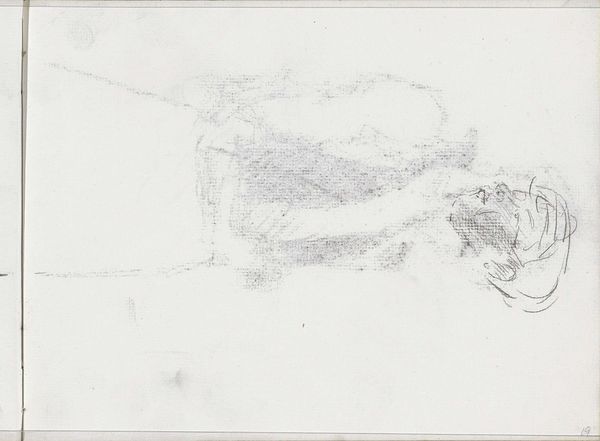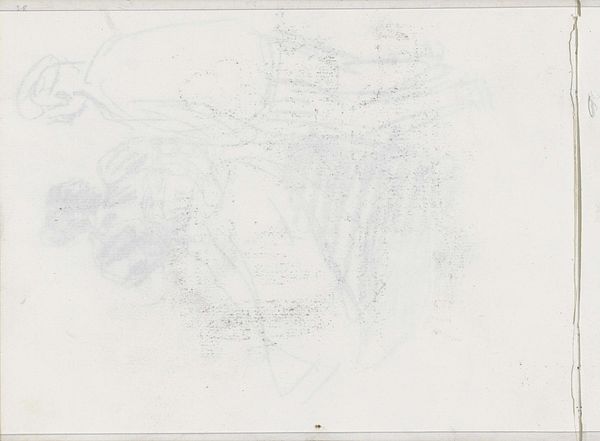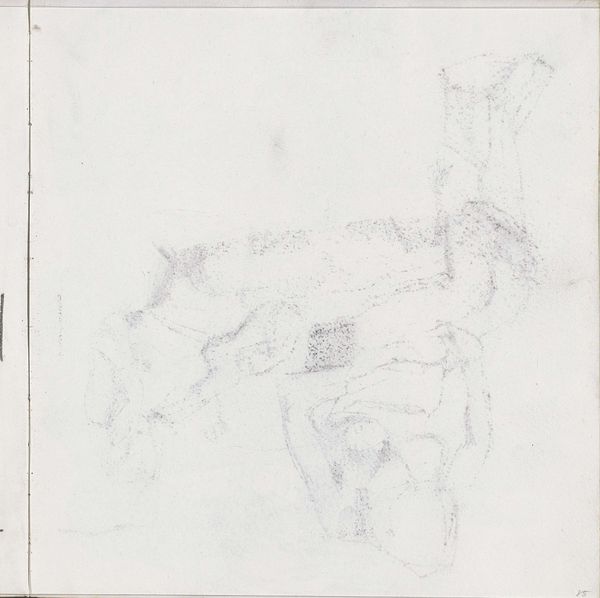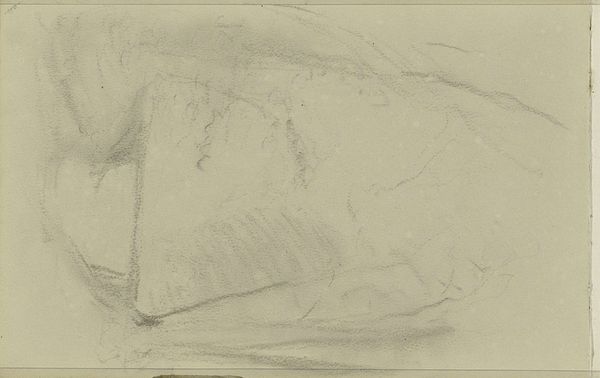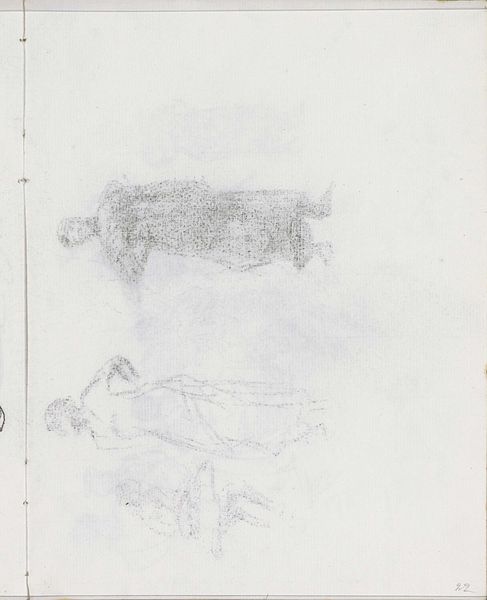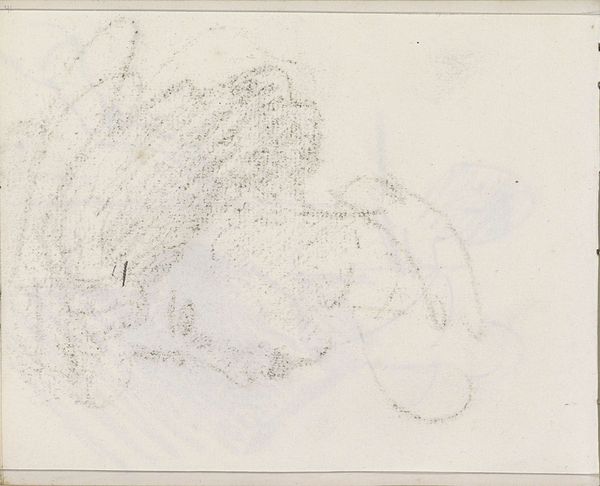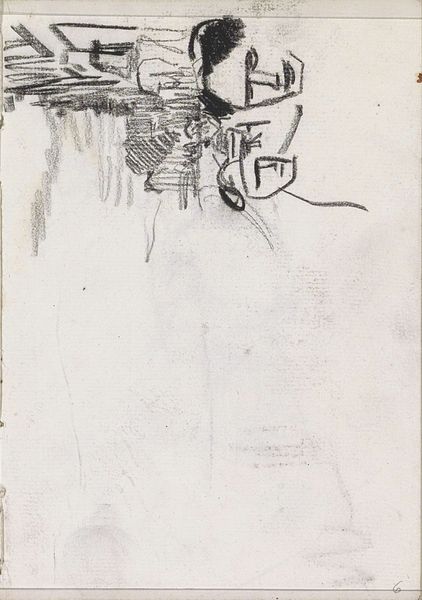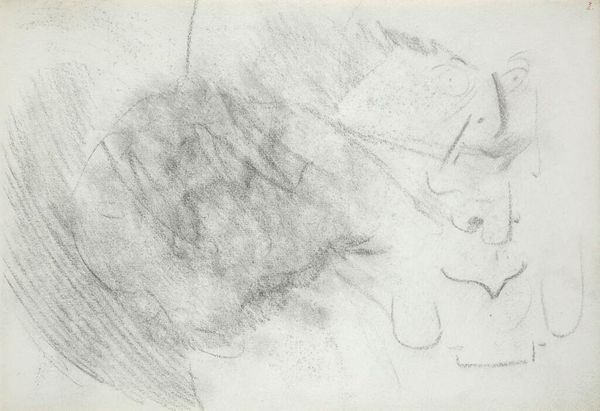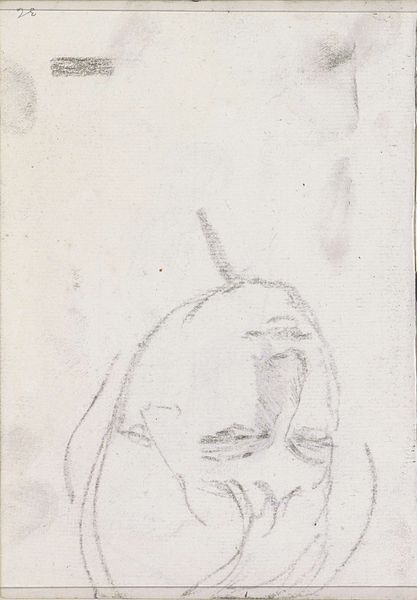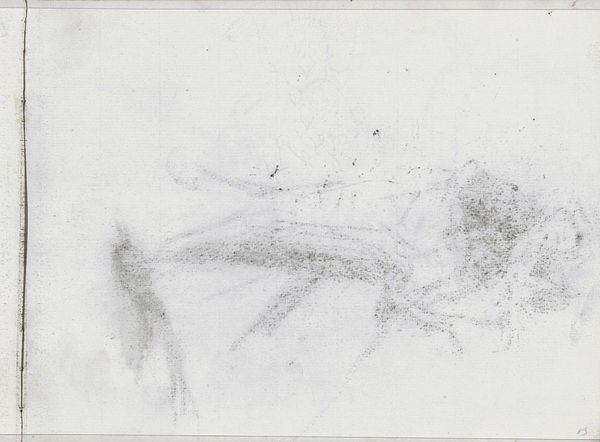
Copyright: Rijks Museum: Open Domain
Curator: Looking at this artwork evokes a sense of fragility. Editor: Indeed. What we have here is titled "Abklatsch van de krijttekening op blad 15 recto," which translates to "counter-proof of the chalk drawing on page 15 recto." Created by Isaac Israels between 1875 and 1934, this pencil and graphite drawing is currently held in the Rijksmuseum. It appears to be a preliminary sketch, capturing a fleeting moment. Curator: The rough sketch seems to depict figures, but they're barely there—almost ghostly. It feels like a glimpse into a memory, perhaps one that's fading. The incompleteness emphasizes the ephemerality of existence and how historical narratives often prioritize polished finished products over works in progress. Editor: I see something different in its incompleteness. It resembles a palimpsest—a surface with layers of meaning accumulating over time, with earlier meanings still visible beneath the new. The rough lines and smudges evoke a sense of mystery. Curator: The lack of detail invites projection, doesn't it? We bring our own histories and experiences to fill in the gaps. In that way, the work democratizes the art experience, acknowledging the viewer's agency in constructing meaning, even encouraging viewers to embrace and value their intersectional identity. Editor: But that ghostly quality can be seen another way. These types of rough sketches can often reflect, whether intentionally or not, collective anxieties related to mortality and remembrance, acting as a mirror reflecting cultural preoccupations that continue across generations. What survives in this drawing isn’t necessarily intended but emerges over time. Curator: That's interesting, and ties into discussions about what histories we choose to preserve, what voices get amplified. Considering the dates of this piece, and the artist, who had access to such tools, we could further ask whose memories get documented, who benefits from such acts? The drawing is simple in appearance, but is a conduit for difficult and pertinent dialogues, and to reckon with complicated socio-political legacies, past and present. Editor: Indeed. It underscores the power of visual symbols to communicate on levels both immediate and enduring, sparking questions we may not have originally considered. Thank you. Curator: A needed and welcome insight, I echo that thanks!
Comments
No comments
Be the first to comment and join the conversation on the ultimate creative platform.
